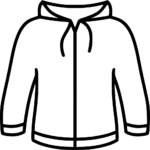Nowadays the fashionable beaded handmade jewelry in trend belongs way back to the people of the Maasai tribe of Kenya. These mesmerizing geometric designs of beads were initially simple and made of single bead strings but looked fascinating.
The beads play an essential part in Maasai culture. Maasai women used to wear beaded handmade jewelry to show their social and marital status in the community. The Maasai beads are a representation of the beauty, tradition, power, and status of an individual.
The women of Maasai are skilled in making beaded jewelry. The skill of beading is passed from generation to generation as an obligation. It was the responsibility of every mother in the Maasai community to teach her daughter the art of beading and the techniques of beadwork.
In ancient times, people of the Maasai tribe used natural materials to make beads. Such as twigs, bones, horns, shells, clay, wood, copper, or brass were grooved. Moreover, they dyed seeds and clays to create the desired color bead. It was a hectic and time- consuming task to handcraft beaded jewelry into a fine necklace and bracelet. Later on, when European traders visited Africa in the 19th century, they introduced glass beads. The glass beads were made in Italy. The Romans were fond of colored glass beads so they manufactured delicate glass beads. These glass beads were colorful and easy to use. That’s why it gained popularity among the Maasai community. With the passage of time and advancements in technology, the Czech Republic captured the market of glass beads and became the main manufacturer of high-quality glass beads. Primarily, the glass beads are made from the glass rod. Now since the glass beads are part of Maasai culture, they are famous as Maasai glass beads.
Maasai glass beads are available in a wide range of beautiful colors. Every colored bead has a meaning and communicates its own story. The people of the Maasai community can interpret and understand what colored bead jewelry represents. As the Maasai tribe were nomadic and survived on livestock for food, nourishment, and income, they treasured their cattle and associated the colors of the beads with it.
Interestingly, the colors used in beadwork and their meanings in the eyes of the Maasai community are as follows:
- Sky Blue beads represent sustenance and energy. It reflects nature’s bright blue sky offering water to people and cattle.
- Vibrant Orange beads represent hospitality and friendship. It reflects the tradition of presenting milk in orange-colored gourd utensils for welcoming the guests.
- Dark Red beads represent valor, unity, and blood. During celebrations and family gatherings, cattle are usually slaughtered and food is shared among all.
- Green beads represent health and land. The greenery on land is responsible for providing food.
- Bright Yellow beads represent fertility and growth. The color of the sun.
- White beads represent peace, purity, and health. It donates the color of cow’smilk and nourishment attained from it.
- Black beads represent struggles and solidarity. It reflects the struggles that thepeople of Maasai suffered and survived together.







